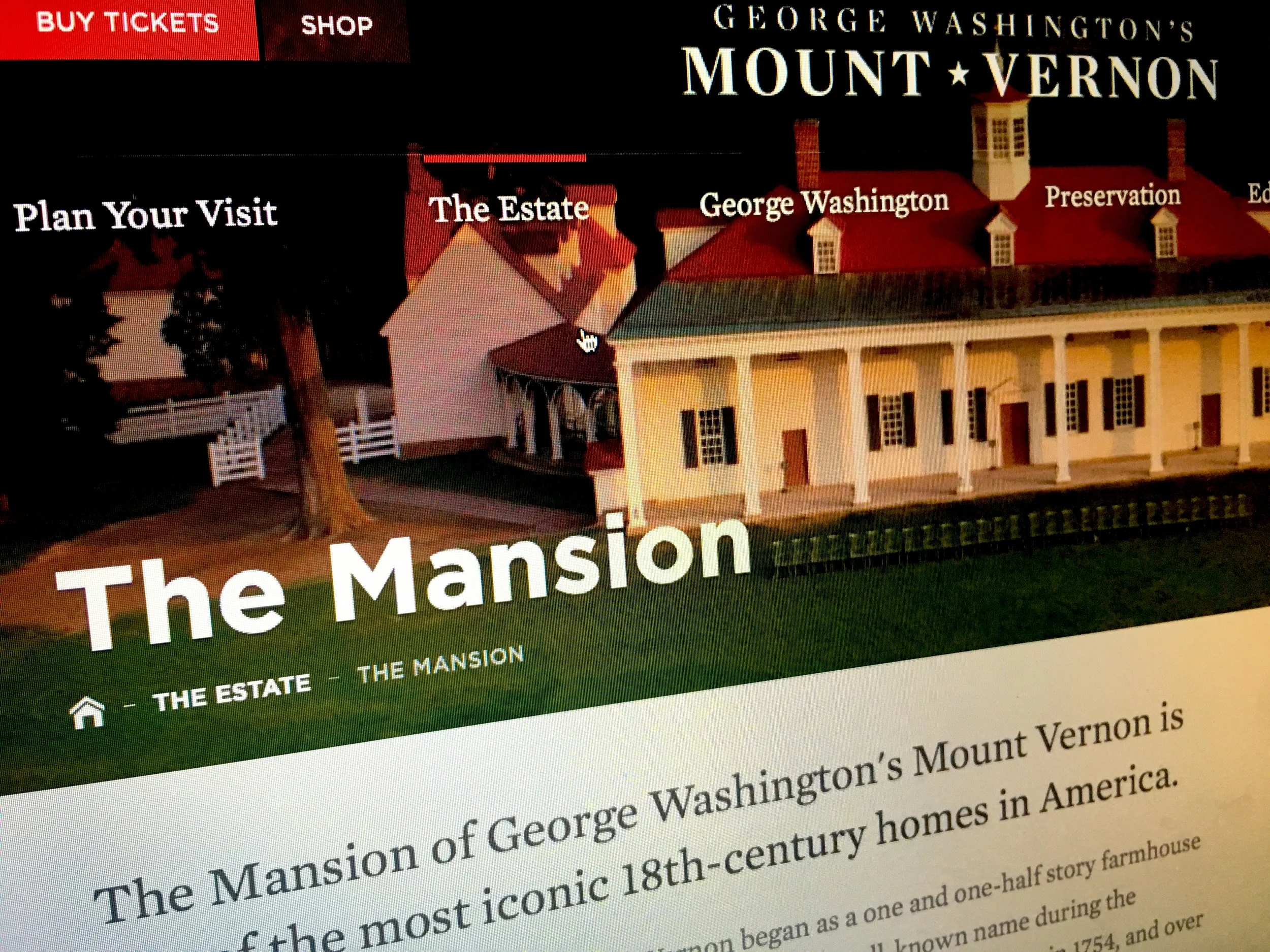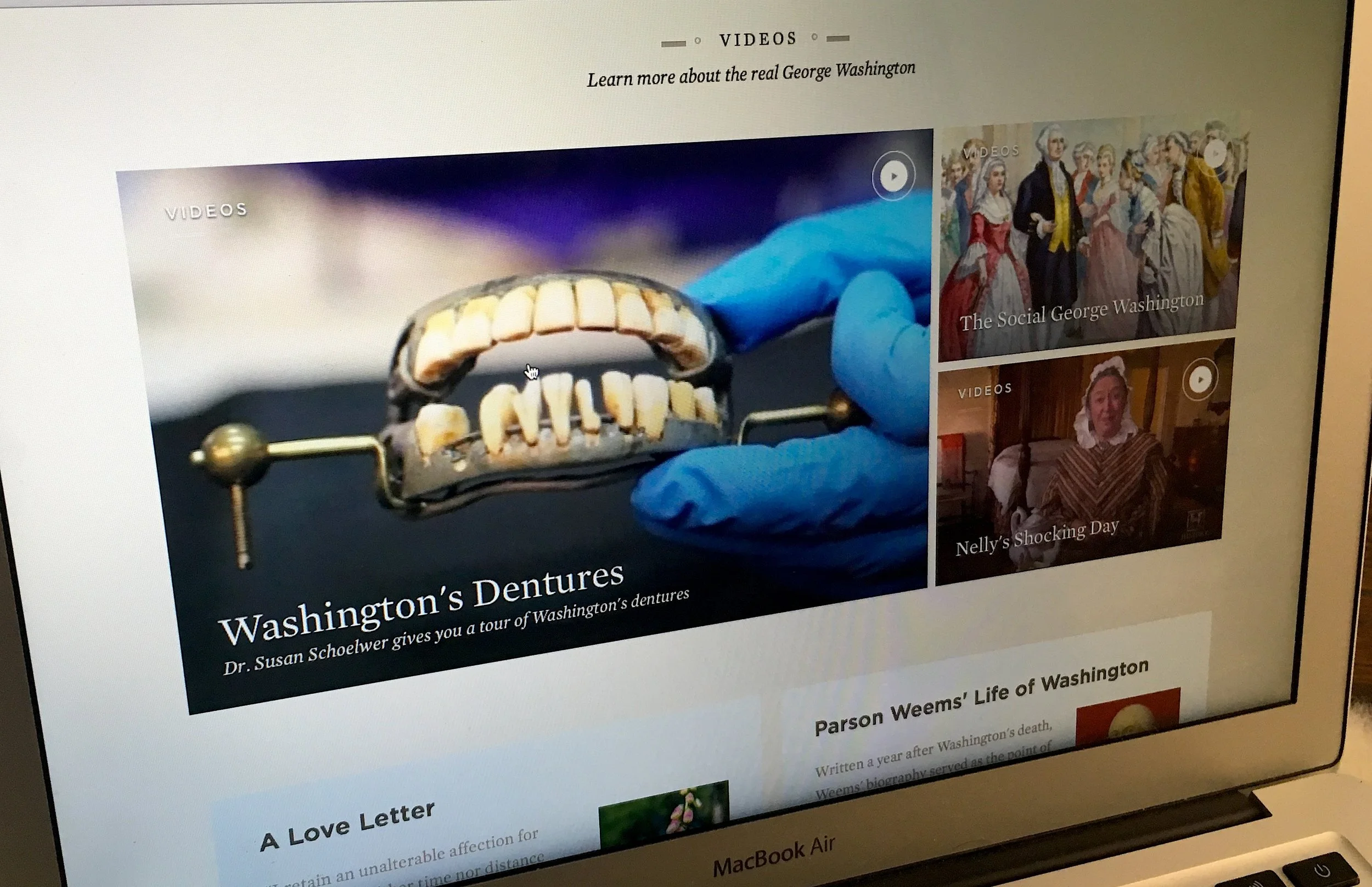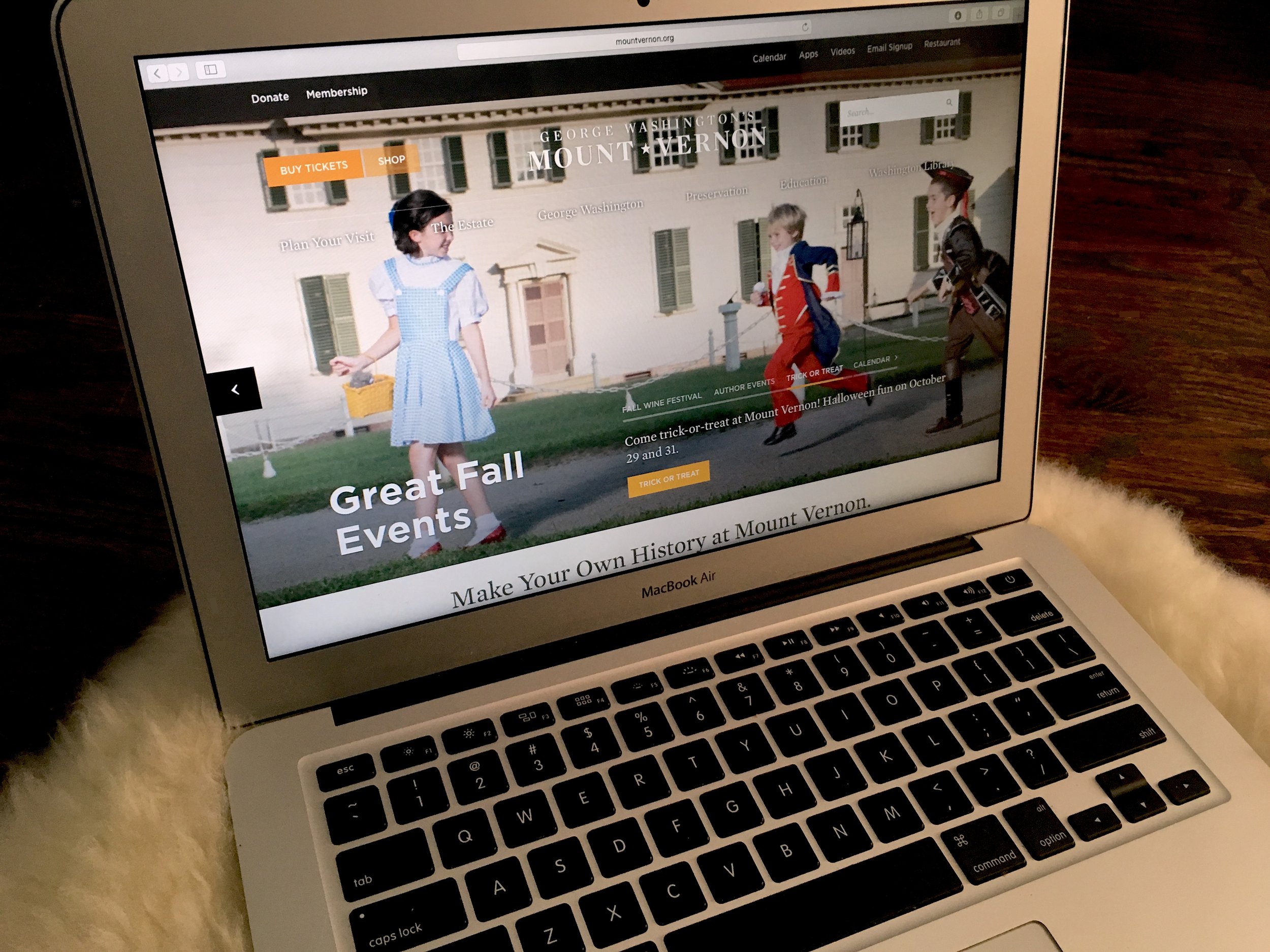George Washington's Mount Vernon
Project: mountvernon.org Website Redesign
Discovery, Kick-off Meetings, Creative Brief & Strategy, Information Architecture, Functional Requirements, Design Thinking & Planning, Content Strategy
The Problem
For years, museums and historic sites like Mount Vernon have tried to keep there web presences simple. They tried to hide all that they had to offer out of fear that if someone saw it online they would feel like they had seen enough. The team at Mount Vernon knew that this was not the case. They knew that the more realistic and fascinating they could make their online experience, the more people would care, and the more they would be compelled to visit.
Mount Vernon tasked us with creating an online experience that not only captured the essence of a visit to the historic site and its many, vastly different experiences, but also helped them to position themselves as the authority on the life of our first president, George Washington.
The Solution
One Site, Many Purposes
Mount Vernon’s site serves various target audiences, history buffs, site visitors, DC and Virginia locals looking for things to do, scholars, students, educators, restaurant goers, and preservationists just to name a few. The site needed to help meet the needs of all of these target audiences, while also creating opportunities to convert a site visitor of one type into another. Expanding their audiences' connections to Mount Vernon throughout the site was the ultimate priority. Turn an educator into a visitor. Turn a visitor into a member. Turn a student into a history buff, etc. Through a thoughtful information architecture, with a focus on education and an eye towards site conversions and content cross-pollination, the Mount Vernon website became exactly what their team had hoped for.
Create once, Publish Everywhere
When we started, the site had three basic templates: a homepage, a sub page, and an encyclopedia entry. When we were done, the site was made up of a super flexible system that allowed for a unique feel to be created on every page of the site. Using modular content to allow the Mount Vernon team to easily share galleries, maps, artifacts, timeline events, and lesson plans anywhere on the site, gave the team the tools necessary to curate and re-purpose their content into unique and thoughtful experiences that help to paint a true to life picture of Washington’s time. Online interactive tools, such as Washington’s World helped to make the experience more than just a website. It is a online learning tool, focused on engagement and delight.








